Anti Microbial Coating Market Summary
As per MRFR analysis, the Antimicrobial Coating Market Size was estimated at 12.62 USD Billion in 2024. The Antimicrobial Coating industry is projected to grow from 14.1 USD Billion in 2025 to 42.63 USD Billion by 2035, exhibiting a compound annual growth rate (CAGR) of 11.7 during the forecast period 2025 - 2035.
Key Market Trends & Highlights
The Antimicrobial Coating Market is poised for substantial growth driven by technological advancements and increasing demand for hygiene solutions.
- North America remains the largest market for antimicrobial coatings, driven by stringent regulations and a focus on hygiene.
- The Asia-Pacific region is emerging as the fastest-growing market, fueled by rapid urbanization and increased healthcare investments.
- The building construction segment dominates the market, while the medical devices segment is witnessing the fastest growth due to rising health concerns.
- Key market drivers include the rising demand for hygiene solutions and technological innovations in coating solutions.
Market Size & Forecast
| 2024 Market Size | 12.62 (USD Billion) |
| 2035 Market Size | 42.63 (USD Billion) |
| CAGR (2025 - 2035) | 11.7% |
Major Players
BASF SE (DE), AkzoNobel N.V. (NL), PPG Industries, Inc. (US), Sherwin-Williams Company (US), DuPont de Nemours, Inc. (US), 3M Company (US), Hempel A/S (DK), Nippon Paint Holdings Co., Ltd. (JP), Kansai Paint Co., Ltd. (JP)
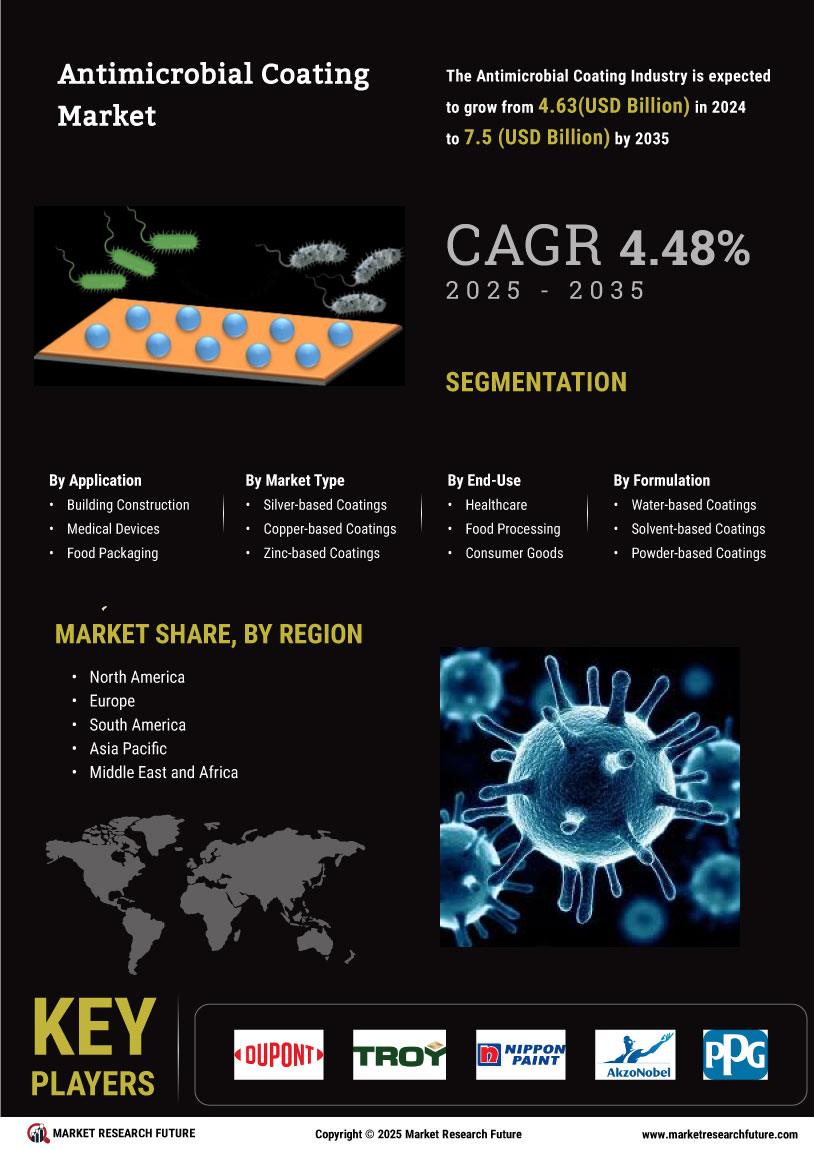

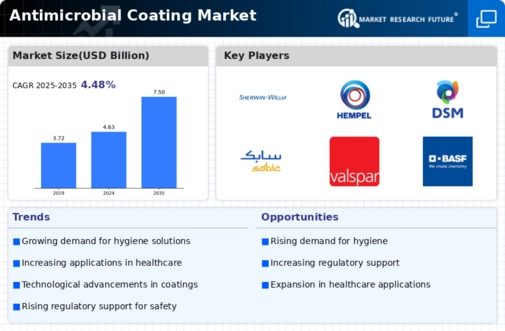
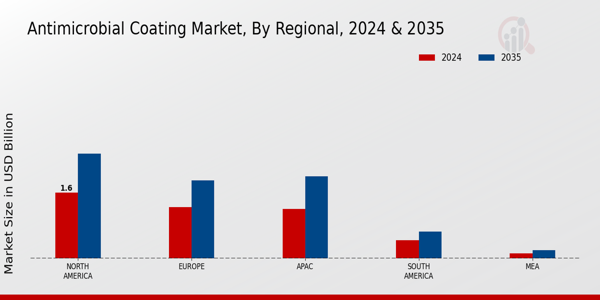

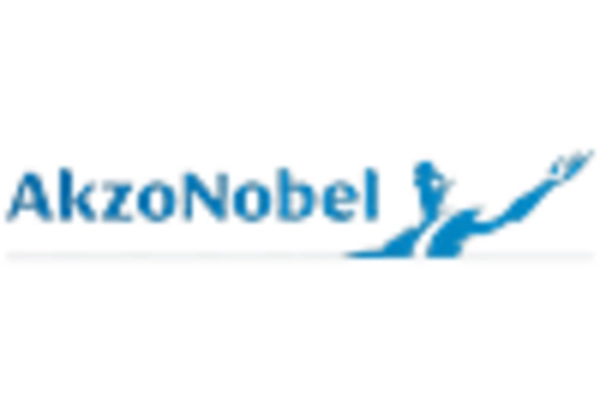



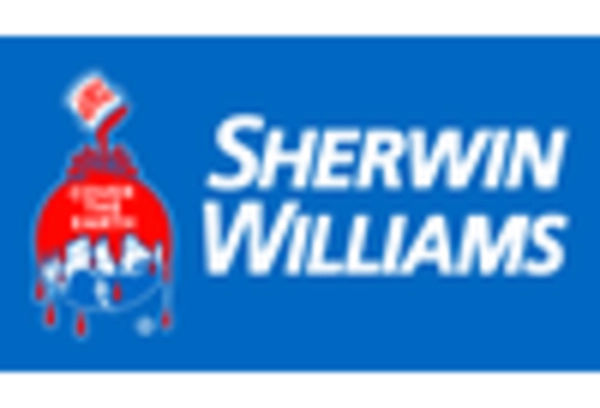








Leave a Comment